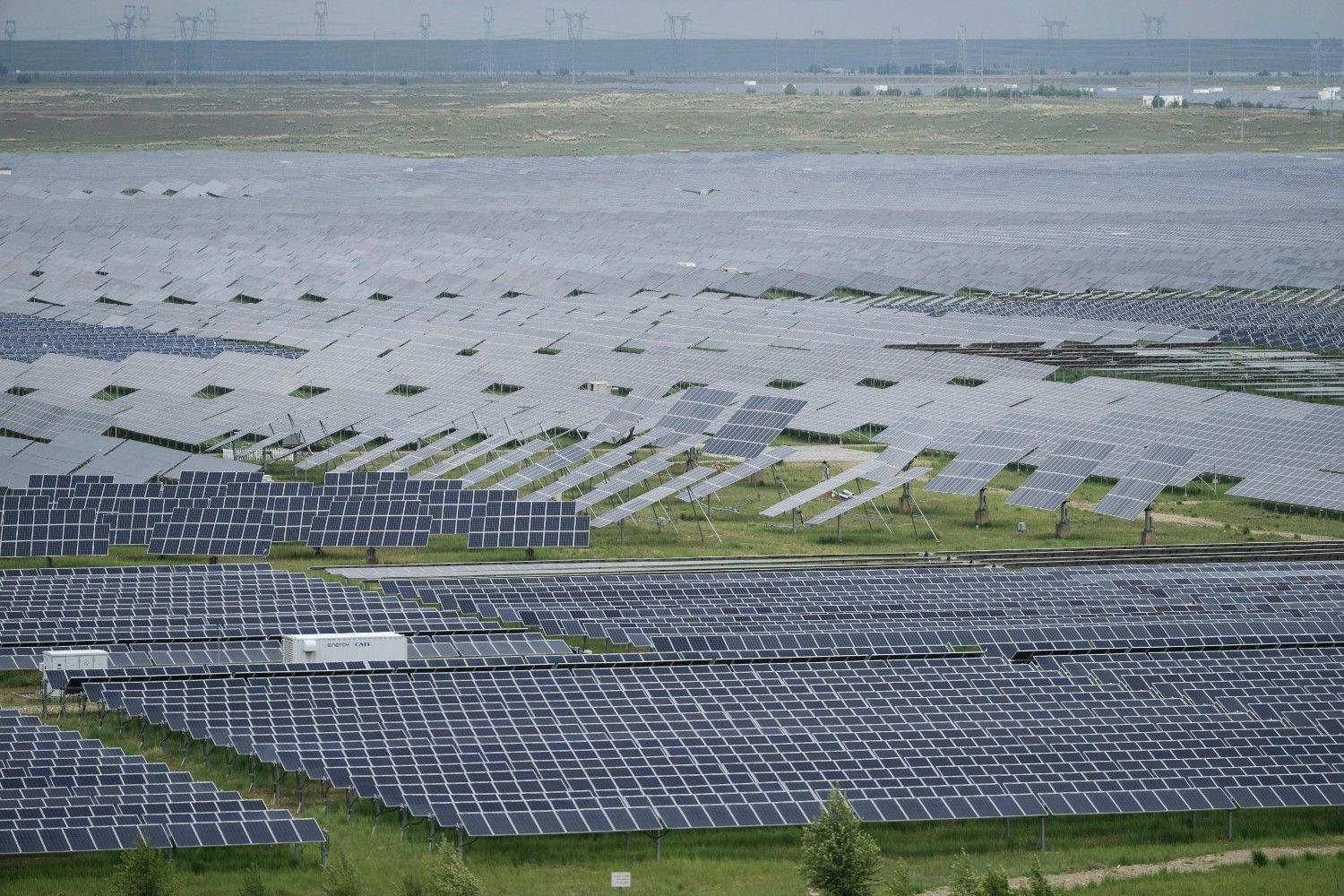
High on the Tibetan plateau, Chinese government officials last month showed off what they say will be the world's largest solar farm when completed — 610 square kilometers (235 square miles), the size of the American city of Chicago.
China has been installing solar panels at a blistering pace, far faster than anywhere else in the world, and the investment is starting to pay off.
A study released yesterday found that the country's carbon emissions edged down 1 percenr in the first six months of the year compared to a year earlier, extending a trend that began in March 2024.
The good news is China's carbon emissions may have peaked well ahead of a government target of doing so before 2030. But China, the world's biggest emitter of greenhouse gases, will need to bring them down much more sharply to play its part in slowing global climate change.
For China to reach its declared goal of carbon neutrality by 2060, emissions would need to fall 3 percent on average over the next 35 years, said Lauri Myllyvirta, the Finland-based author of the study and lead analyst at the Centre for Research on Energy and Clean Air.
China's emissions have fallen before during economic slowdowns.
What's different this time is electricity demand is growing — up 3.7 percent in the first half of this year — but the increase in power from solar, wind and nuclear has easily outpaced that, according to Myllyvirta.
“We’re talking really for the first time about a structural declining trend in China’s emissions,” he said.
China installed 212 gigawatts of solar capacity in the first six months of the year, more than America's entire capacity of 178 gigawatts as of the end of 2024, the study said.
Electricity from solar has overtaken hydropower in China and is poised to surpass wind this year to become the country's largest source of clean energy. Some 51 gigawatts of wind power was added from January to June.
Li Shuo, the director of the China Climate Hub at the Asia Society Policy Institute in Washington, described the plateauing of China's carbon emissions as a turning point in the effort to combat climate change.
“This is a moment of global significance, offering a rare glimmer of hope in an otherwise bleak climate landscape,” he said, adding that it also shows that a country can cut emissions while still growing economically.
But Li cautioned that China's heavy reliance on coal remains a serious threat to progress on climate and said the economy needs to shift to less resource-intensive sectors.
“There's still a long road ahead,” he said.